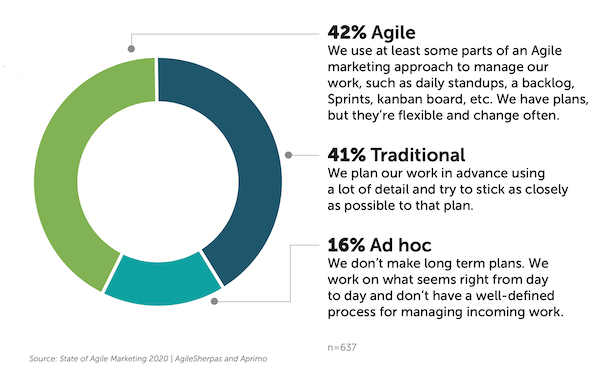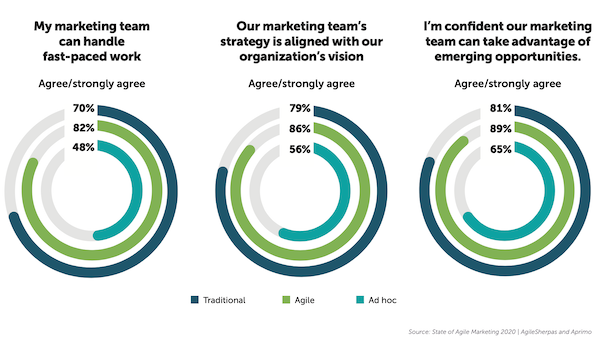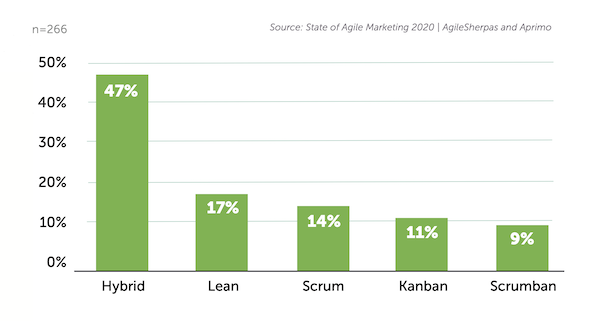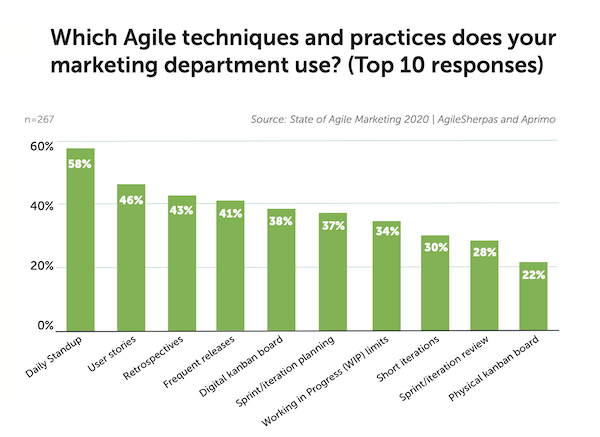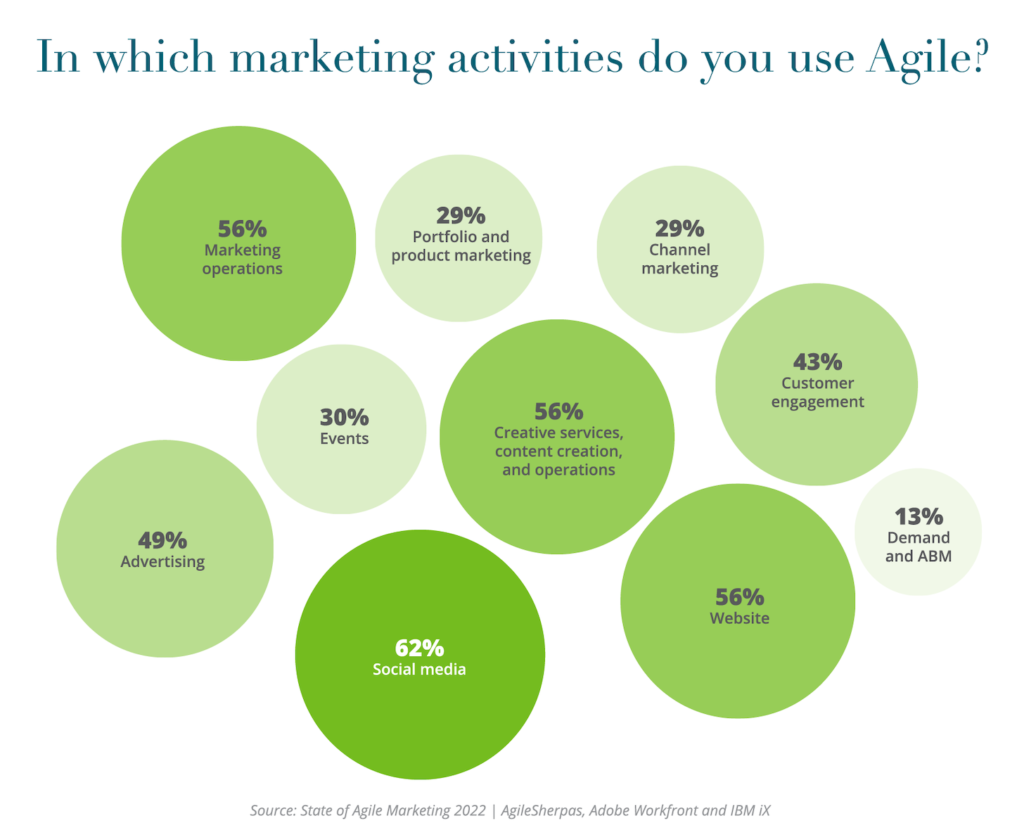There are a handful of reports I eagerly look forward to every year, and Andrea Fryrear’s State of Agile Marketing is one of my favorite. The third annual edition is available now, and like last year’s, it’s has a number of great insights into the “process” corner of the people-process-technology triangle.
The big trend: agile marketing adoption is up from 32% in 2019 to 42% in 2020. Almost all of the growth in agile comes from a reduction in the percentage of marketers identifying with the “traditional” model of marketing management.
It also turns out that agile marketers are smarter, stronger, and better looking.
Okay, just kidding. But agile marketers can handle fast-paced work better. They are aligned on strategy and vision better. And they can take advantage of emerging opportunities better.
No wonder that 74% of agile marketers report they are satisfied or very satisfied with the way their marketing department manages work.
The number one reason marketers adopted agile, cited by 58%, was because it improves productivity. But the number two reason, cited by 54%, was because it enhances the ability to manage changing priorities.
If you can’t appreciate that under today’s circumstances, when could you?
Critics of agile have often attacked that latter benefit by implying that “changing priorities” was code for not having a solid strategy. That argument is one of the surest ways to bait me, as I’ve repeatedly explained why choosing between being strategic or being agile is a false dichotomy. (Sorry, if you’re trading strategy for agility, you’re doing it wrong.)
Even under normal conditions, pre-pandemic 2020, rapid shifts in markets and the value of accelerated test-and-learn experimentation were more than enough justification for why smart marketers would intentionally adjust their priorities throughout the year. And why they would seek management methods that enable that adaptability.
But having just witnessed the world turn itself upside down in a matter of weeks, we now recognize that the scale of an unexpected disruption can be much, much bigger. Change isn’t just ripples in our pond. It can be a sudden tsunami.
Managing change is at the heart of marketing operations and technology leadership.
Of course, how marketing teams implement agile marketing has high variance. 47% report using a “hyrid” marketing methodology that they tailor to their specific culture and operational needs, drawing upon a variety of agile mechanisms from Scrum, Lean, Kanban, etc.
The most common agile practices are daily standups, user stories, retrospectives and frequent releases.
I am particularly heartened that 43% have embraced retrospectives as part of their agile operating system. Agile shouldn’t be just about iterating and learning around the outputs of marketing — what’s working, what’s not in the market. It should be about iterating and learning how to work more effectively as a team, adapting the process itself.
There are many more illuminating and inspiring findings in this latest State of Agile Marketing report. Pick up a copy.
Sending positive thoughts your way.
